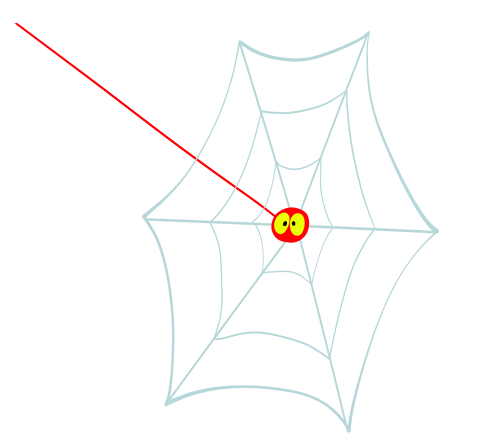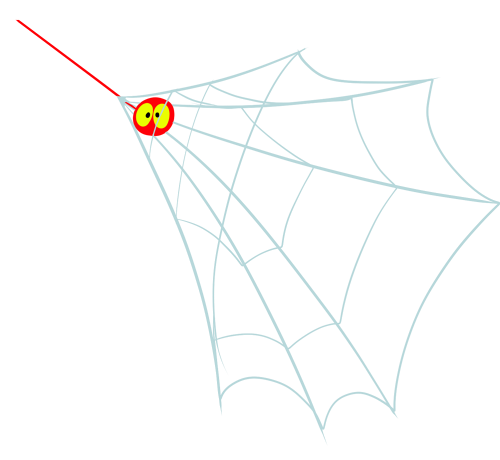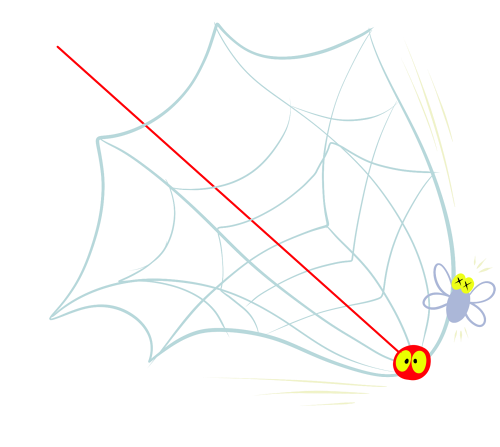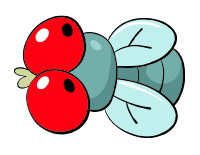
DAY FIFTEEN: "SLINGSHOT" SPIDERS
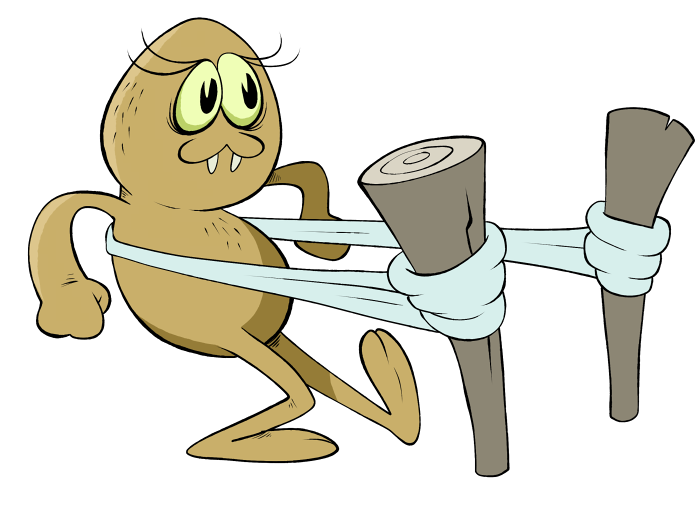
[REAL VIDEO HERE]
Spoyd Designed by Rev Storm!
We're on our eighth and final example of a spider that uses its own silk in a bizarre, novel way, and this might just be the most cartoonish of the bunch. The behavior is still so new to science that the spiders haven't been conclusively identified, but was first officially documented by Entomologist Lary Reeves, who observed it on a 2014 expedition in South America and believes them to be orb weavers belonging to the genus Naatlo.While this trick only works in one direction, the back of the web is still sticky enough to trap insects who blunder into it by accident, so the usual, passive trapping action is still at work all the while, with the additional slingshot attack to capture even more meals that might otherwise escape!
A mystery remains as to how the spider actually knows that an insect is near. She wouldn't be able to smell them, or exactly "hear" them with her typical spider anatomy, her eyes are no better developed than a typical orb weaver and she even faces away from the action as she holds on to that central line. Is it possible that some of the fine hairs covering her body, already used to detect vibration, are so sensitive that they even feel the tiny "breeze" from a mosquito's wings?
